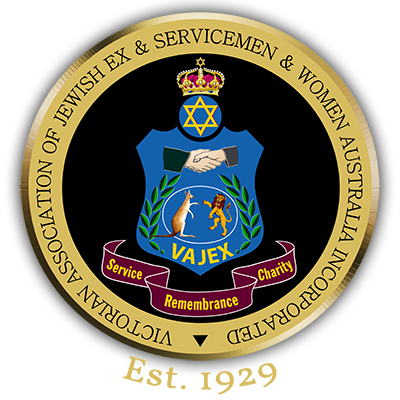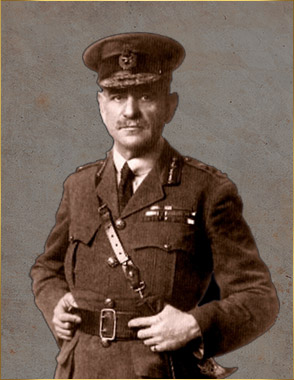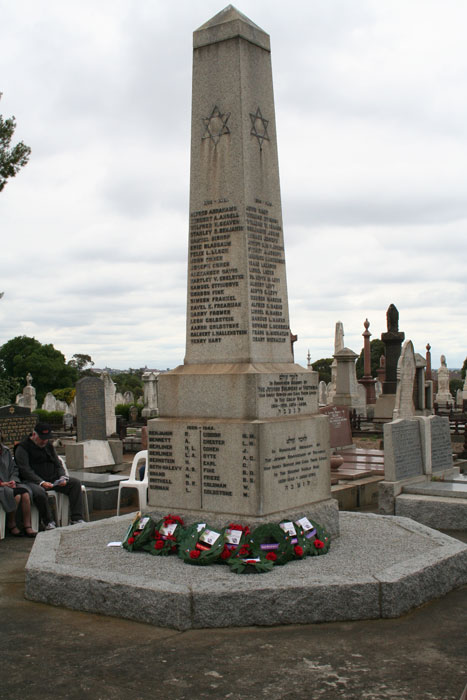Victorian Association of Jewish Ex & Servicemen & Women Australia Incorporated
Founding Member General Sir John Monash GCMG KCB VD
Aarons
Surname
Aarons
First names
Maurice Lewis
Rank
Private
Service No.
2281
Date of Death
8/08/1915
Hebrew Date
28 Av 5675
Hebrew Date
כ״ח בְּאָב תרע״ה
Age at Death
35
How Died
Killed in Action
Where Died
Gallipoli
Cemetery
Lone Pine Memorial, Gallipoli, Turkey
Service Details
16th Australian Infantry Battalion, AIF
Served
Gallipoli
Occupation
Pearler
Age at Enlistment
34
Place of Enlistment
Blackboy Hill, WA
Locality on Enlistment
Broome, WA
Religion
Jewish
Gender
Male
Date of Enlistment
5/5/1915
Date of Discharge
Country of Enlistment
Australia
Notes
Maurice Aaron was born in the inner city suburb of Carlton, Victoria in 1880 Reg No 21101, he was the son of Lewis and Letitia Aarons née Henwood. In May 1915, Morrie was working in Broome, Western Australia as a Pearler. War had broken out the year before and Australia was recruiting able bodied men to serve in the Australian Imperial Force, when the recruiting officer came to town on 5 May, Morrie and many other young men in the town, volunteered to serve. Catching a coastal steamer from Broome, they arrived in Freemantle and were transported to Blackboy Hill training camp. Here they underwent a medical examination to ensure they were fit for service. Morrie passed with flying colours. He was described as being 5 feet 5¾ inches tall, weighing 114lbs, his chest measurement was 32/34 inches. He had a dark complexion with dark brown hair and green brown eyes. Morrie also gave his religious denomination as Jewish. Morrie was assigned to the 16th Battalion and was to form part of the 6th reinforcements to the Battalion. Now commenced an intense period of training designed to prepare the men for the rigors of war. Due to the need to get men to the front, that period was be less than a month. On 25 June 1915, Morrie and the other men of the 6th reinforcements embarked at Freemantle on HMAT A2 “Wandilla” heading for the Dardanelles. They sailed via the Indian Ocean and the Suez Canal before dropping anchor briefly in Alexandria Harbour. They then moved on the Island of Imbros where the travel weary troops went ashore to stretch their legs in route marches before receiving their final kit out for the battle ahead. On the evening of 30 July, they boarded the small ships that were to take them to the peninsular. Morrie was taken on the strength of 16 Battalion on 31 July and was assigned to “C” Company; he then made the long climb up the Monash Gully to Pope’s Hill where his unit was dug in between the Nek and Quinn’s Post. The arrival of the 6th reinforcements was timely as the August Offensive was about to commence. The plan was to land troops at Suvla Bay while Australian troops launched attacks all along their front to act as a diversion while the troops at Suvla got ashore. On 6 August the Australians launched the attack on Lone Pine; this battle was to rage for three days. On 7 August, attacks were launched at The Nek, Pope’s Hill and Quinn’s post, the attacks and counter attacks raged back and forth over the next few days. On 8 August, sometime during the battle, Morrie Aarons was to lose his life. There was intense confusion throughout the battle and originally Morrie was listed as missing. It wasn’t until the following year that he was officially declared Killed in Action. His family back home in Australia suffered through the anxiety of not knowing what had happened to him. His friend from Broome, Frank Levy, had heard that he was dead - a belief held by many of the men he had enlisted with from Broome. His sister, Mrs Adelaide McEwan, had received a letter from an unnamed friend of his that told of Morrie being struck by a shell and blown to pieces but it wasn’t until a court of enquiry was held in April 1916 that his family were formally advised that he had been killed. Morrie’s remains were never found and he is remembered, along with over 4,900 Australian and New Zealand serviceman who have no known grave, on the Australian Memorial to the missing at Lone Pine. Morrie’s friend, Frank Levy, was also to sadly lose his life on 19 April 1917. After surviving in the Gallipoli campaign, Frank had transferred to the Imperial Camel Corps. Attached to No 3 Company 1st Anzac Battalion, Frank, like Morrie, was lost in the fog of battle, originally reported wounded and missing. His fate was later confirmed by a court of enquiry. Frank's body was never recovered, having no known grave he is commemorated on the Memorial to the missing at the Jerusalem War Cemetery. For his service during WWI, Maurice Lewis Aarons was awarded the 1914-15 Star, the British War Medal and the Victory Medal. Morrie’s brother, Nathan, became custodian of his medals as well as the King's Memorial Scroll and Plaque that was presented to the families of the deceased in recognition of the ultimate sacrifice made in the service of the Nation.

 John Monash (Monasch) born
in Melbourne, Australia on 27 June 1865, the son of
German Polish Jewish migrants, can be researched in any
military history encyclopaedia or in fact by just
‘Googling’ his name on the internet. His history
and list of achievements are long and far too many to detail
in this brief summary. However, might I say that reading his
history is well worth the effort and I can assure you that
his deeds will amaze you. I have found that the deeds are
better labelled on more than one man and in more than one
lifetime.
John Monash (Monasch) born
in Melbourne, Australia on 27 June 1865, the son of
German Polish Jewish migrants, can be researched in any
military history encyclopaedia or in fact by just
‘Googling’ his name on the internet. His history
and list of achievements are long and far too many to detail
in this brief summary. However, might I say that reading his
history is well worth the effort and I can assure you that
his deeds will amaze you. I have found that the deeds are
better labelled on more than one man and in more than one
lifetime. An
announcement was made in the weeks leading up to the
Centenary of ANZAC by Judy Landau, President VAJEX Aust.
She stated that it gave her great delight to announce
that VAJEX Aust (Victorian Association of Jewish Ex
& Servicemen & Women Australia Inc) has
successfully raised the required funds to build a new
Victorian Jewish Memorial after the style of the
historic Memorial located in the Jewish section of the
Melbourne General Cemetery. After an extensive two year
process, Judy has single-handedly sought letters of
support, raised the funds, and obtained approval from
the City of Port Phillip.
An
announcement was made in the weeks leading up to the
Centenary of ANZAC by Judy Landau, President VAJEX Aust.
She stated that it gave her great delight to announce
that VAJEX Aust (Victorian Association of Jewish Ex
& Servicemen & Women Australia Inc) has
successfully raised the required funds to build a new
Victorian Jewish Memorial after the style of the
historic Memorial located in the Jewish section of the
Melbourne General Cemetery. After an extensive two year
process, Judy has single-handedly sought letters of
support, raised the funds, and obtained approval from
the City of Port Phillip.


